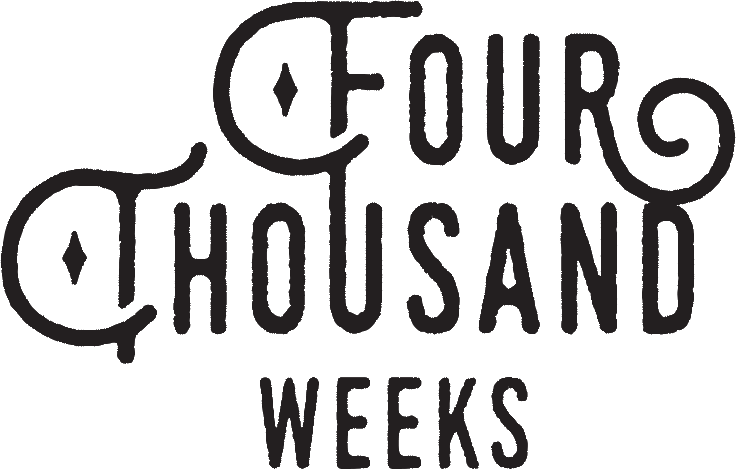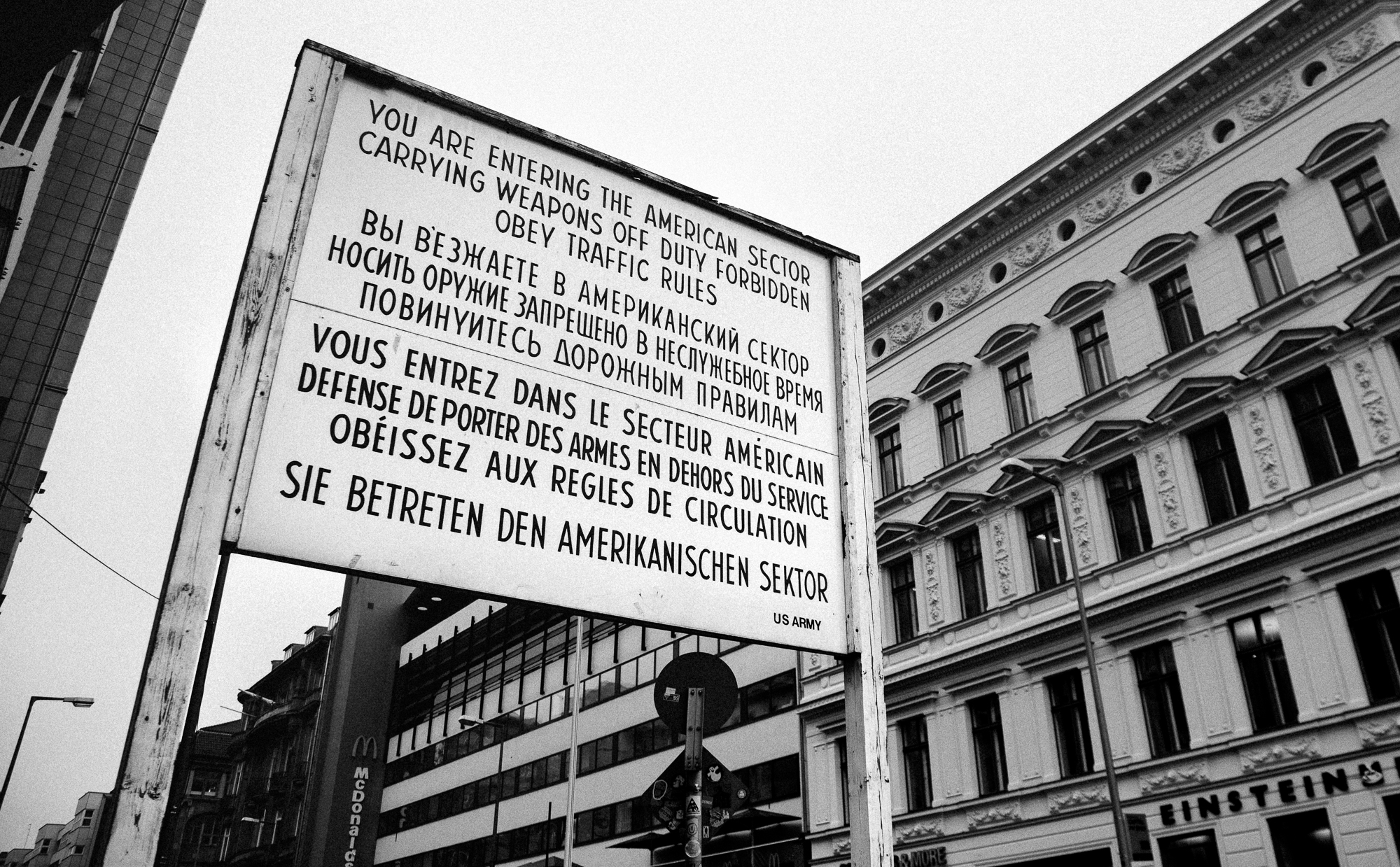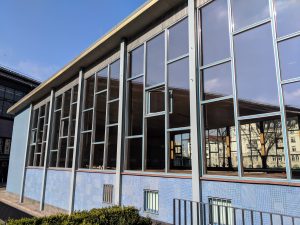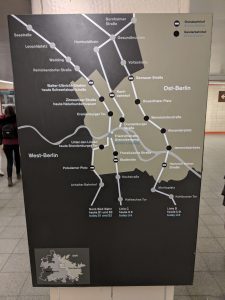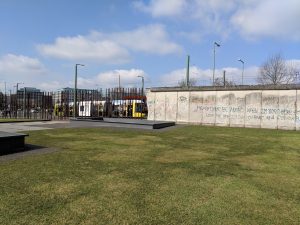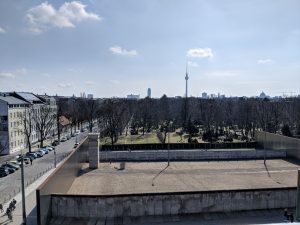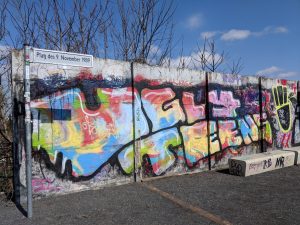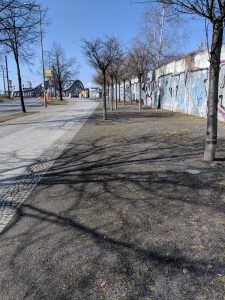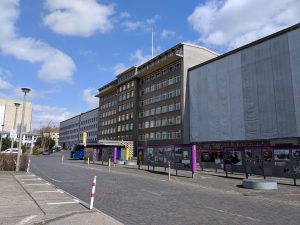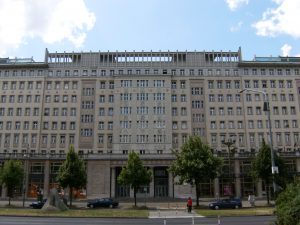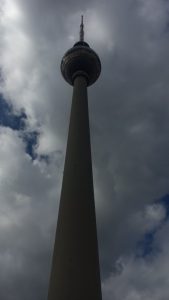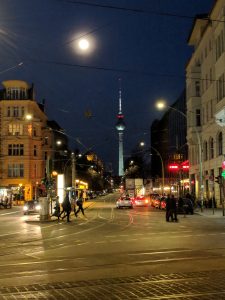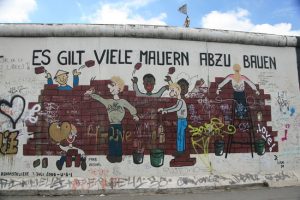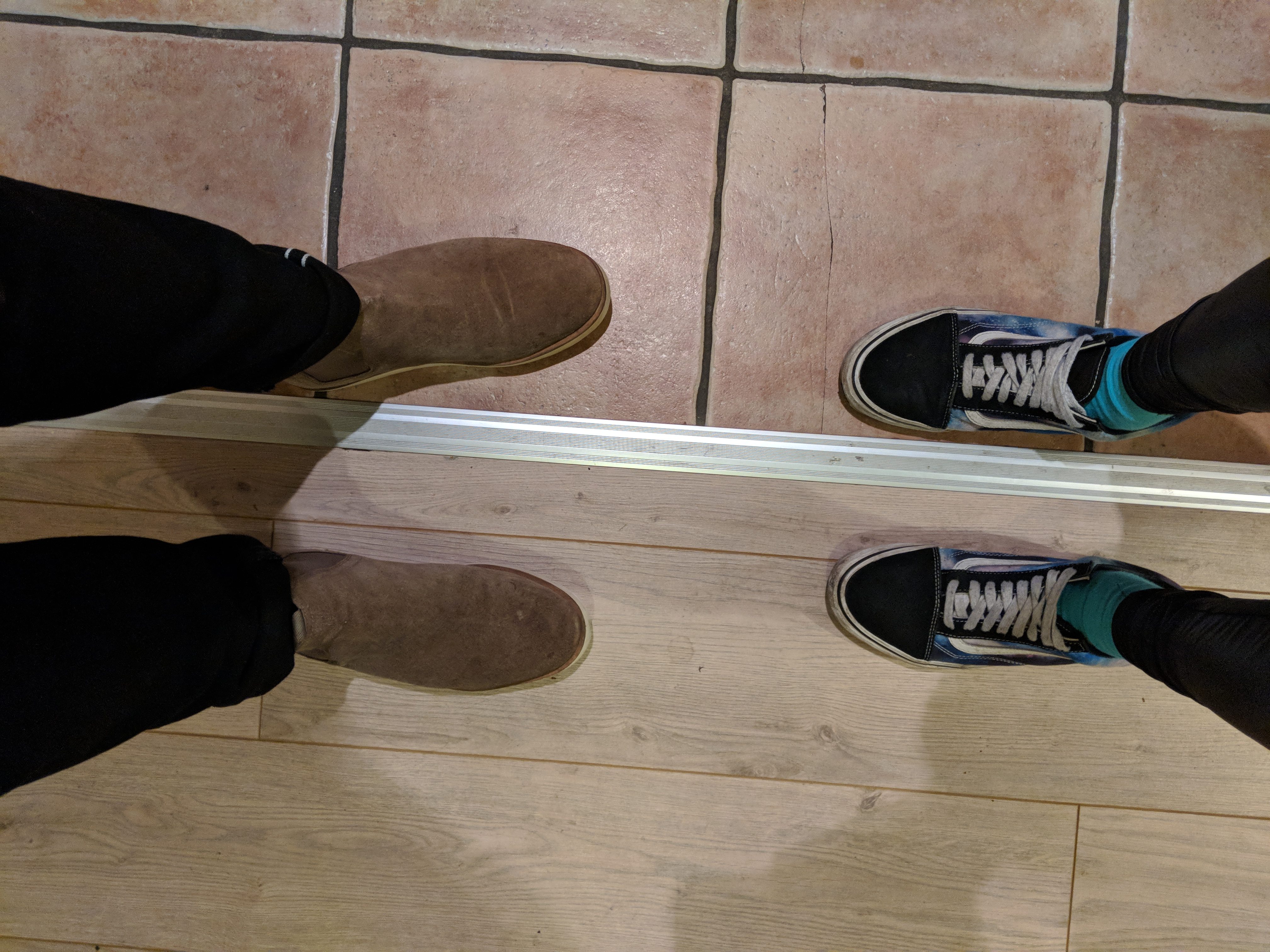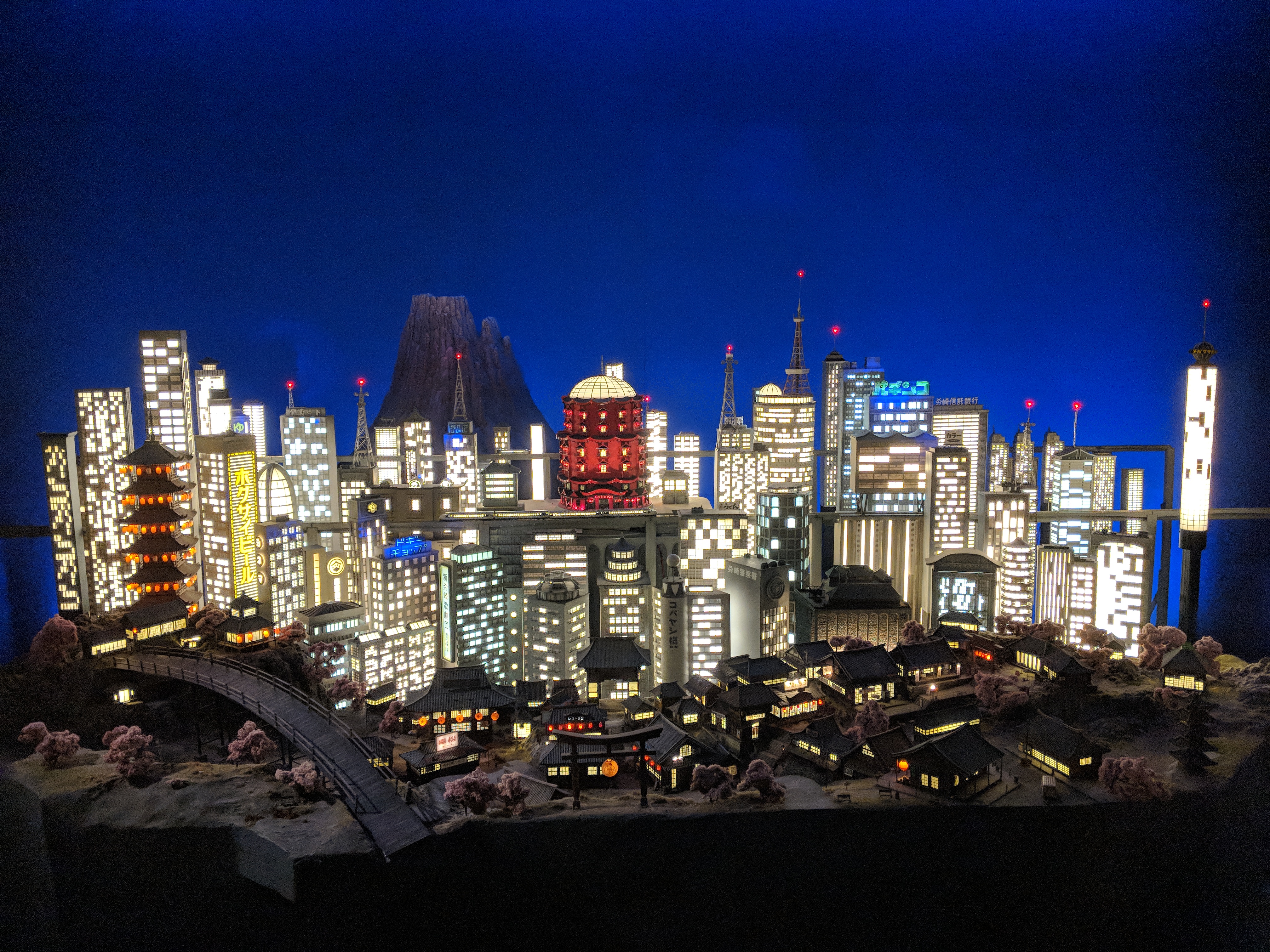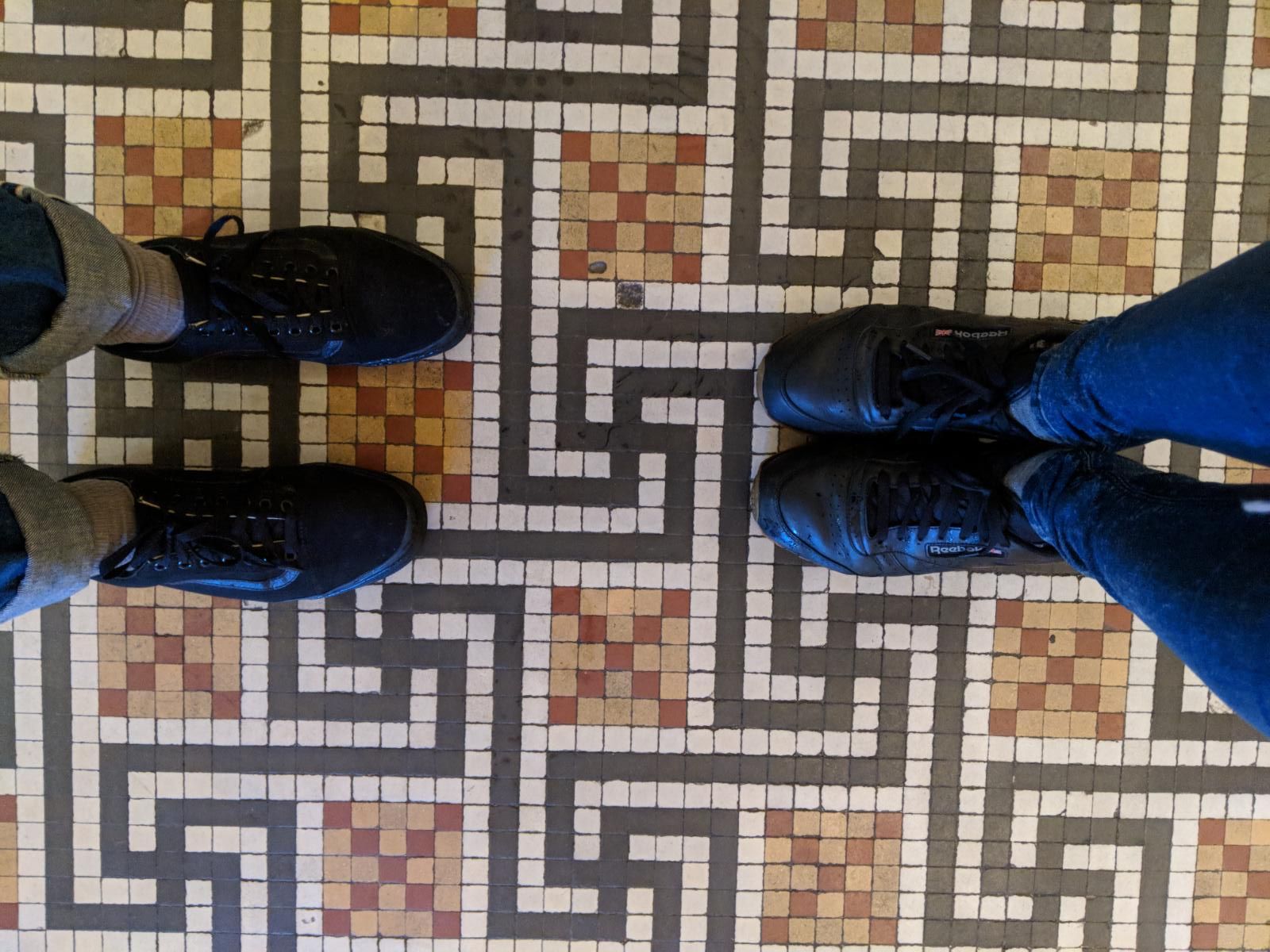Berlin is a place we frequent, and an amazing place to go to party, explore history and enjoy being abroad and somewhere you can do it on a really small budget.
We’ve put our itinerary together for a cheap weekend here, but this time we thought is would be worth using Jess’ history knowledge to help you explore Berlin slightly further (yes, don’t worry we’ll do a food blog soon too). Here are our places to visit to get a feel of Berlin when it was split in our Cold War Berlin spots, oh and all for free!
Palace of tears: Friedrichstrasse station.
Exiting East Germany. Checking in in the hall at Friedrichstraße railway station. Luggage and passport control. It sounds so rational and bureaucratic but means much more: leaving friends and family, tearful goodbyes – which is how the Tränenpalast acquired its nickname.
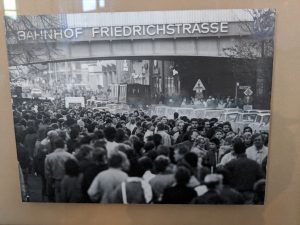
Immediately after the construction of the Berlin Wall, the East erected the check-in hall at Friedrichstraße railway station in 1962. It was used for passengers crossing from East to West Berlin. Policemen checked passports and visas, customs officers checked luggage and finally passports were checked thoroughly once more before onward travel was permitted.
The police made it so difficult to cross, and the hall was so intimidating that many people were put off the idea of crossing completely. This free museum tells the tales of the palace of tears, the successful crossings and unsuccessful ones.
Friedrichstraße- Nordbahnhof train ride.
The stations between Friedrichstrasse and Nordbahnhof were ghost stations during cold war. So called because the north-south line that existed before the Cold War started went through a section of East Berlin. West Berlin ended up paying the East to keep the line there rather than re-routing it, but they boarded up the stations, put up walls outside the stations and even placed soldiers in the stations…even though the trains didn’t stop. The main aim was to make sure that no East Berliners could escape onto trains…but lots of the soldiers placed on guard at the station did manage to! Loads of info about this at Nordbahnhof station when you get up to the concourse.
Berlin Wall Memorial: Nordbahnhof.
Thebest place to get a real sense of the size and brutality of the wall. Watch tower, inner and outer wall, markers of the no man’s land and death strip and metal strips on the floor showing escape tunnels and stasi tunnels, as well as a memorial for victims of the wall it’s an amazing place to commemorate the huge, obnoxious and life changing structure. You can climb the bug grey tower (or get the lift if you’re as scared of heights and steps with holes in as Jess is).
Fall of the wall timeline: Bornholmer strasse.
The story goes that there was a meeting in which provisions for easier travel were discussed but the minister doing the TV interview wasn’t there. When he was asked on live TV what was going on, he accidentally said the wrong thing with the wrong time and the ensuing events were the border between East and West Berlin came down, and this is where it first happened. On the hill are metal plates with times on telling you what happened, and at the top closest to the station are some picture boards with it all on.
Stasi Museum and archives: Magdalenenstrasse.
The HUGE complex that looks rather like a North London council estate is actually the old Stasi HQ, and what is now the Stasi museum and the rest of the buildings are just archives. Archives of files kept on anyone. That’s buildings full of people spying on each other. As a German at the time there you can now ask to see your file. Some don’t because they don’t think they would have been important enough to have a file, some don’t because they don’t want to know about friends and family members that spied on them or how the Stasi tried to manipulate and interrupt their lives. The museum is fantastic too. Very boys toys. Watch The Lives of Others.

Stalin Allee: Strausberger platz.
Now Karl Marx Allee. After the second world war, the boulevard, which was then still called Frankfurter Straße, lay completely in ruins. On 21 December 1949 (Stalin’s 70th birthday), it was renamed Stalinallee, and on 13 November 1961 renamed again to Karl-Marx-Allee.
Between 1952 and 1960, what were probably the most monumental buildings of the 20th century were built. On the instructions of the ruling party, the road was first widened to 90 metres (and thus 20 metres wider than the Champs-Élysées in Paris) before the seven- to nine-storey apartment blocks were built – in the classical socialist style of the 1950s. These buildings were also called “wedding-cake-style workers’ palaces”. The aim was to impress, but in fact it was one place where the workers revolt started. The government offered a ballot to workers that the may end up with an apartment in this fabulous looking new block. Shockingly not many did.
Alexanderplatz: the main place of the DDR, with many remnants of the Cold War era, from the fountain of friendship to the world clock, but most importantly the TV tower.
The tower was built in Communist East Germany, in order to prove that they were able to build such a high and technically advanced tower. The sphere of the tower is reminiscent of the Soviet Sputnik satellite, but the best fact is that the architects that built it, had a dig at the Communist government as the first thing you see when you get the elevator up and the doors open…is West Berlin.
East Side Gallery: Ostbahnhof.
Thesection of the wall that they have left as an art gallery. Once it was the Berlin Wall. Now it’s the longest open-air gallery in the world, all 1316m of it. From the famous kiss to some more contemporary critiques of the political-social goings on in the world. It’s free and worth the walk.
